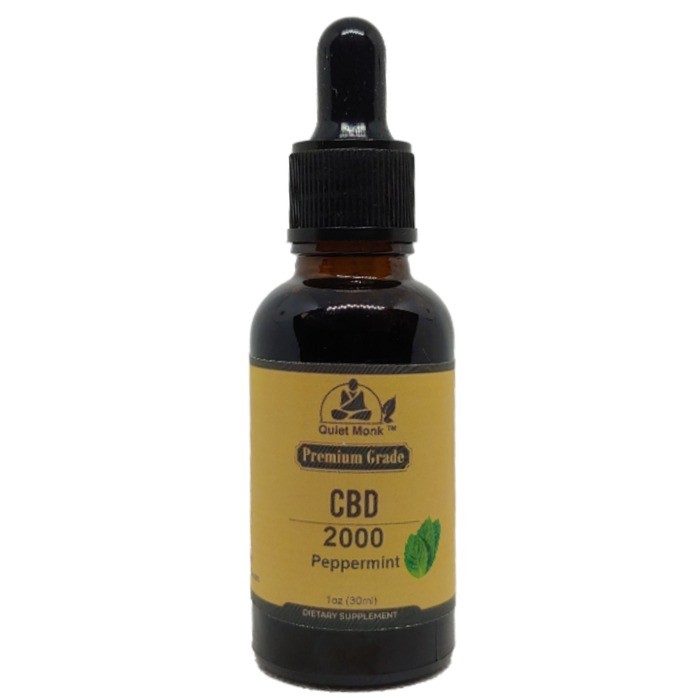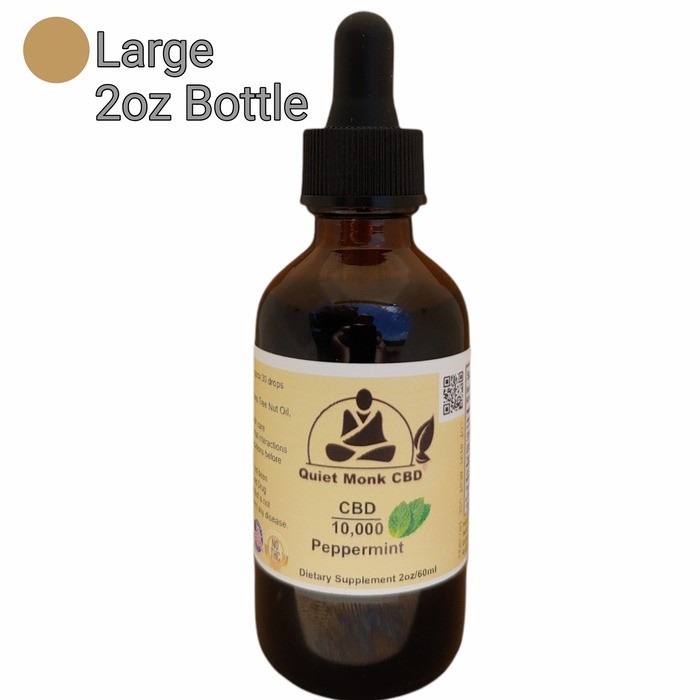
Are you interested in learning more about CBD oil and its potential benefits for pain relief?
We will delve into how CBD oil actually works for pain, its interaction with the endocannabinoid system, and the different types of pain it can assist with. Additionally, we will cover the timeframe for CBD oil to take effect, factors that impact its efficacy, and the optimal ways to utilize it. You will also gain insights into potential side effects and guidance on selecting the appropriate CBD oil for pain relief.
Let us begin our exploration into the world of CBD oil and pain relief.
What is CBD oil?
CBD oil, which is derived from the cannabis plant, is well-known for its potential therapeutic benefits in alleviating and managing pain. It is considered a natural remedy with a range of health advantages.
Initially utilized in ancient civilizations for its healing properties, CBD oil has become increasingly popular in modern times due to its non-psychoactive characteristics. This makes it a safe choice for individuals seeking relief from chronic pain and inflammation.
The extraction process typically involves using CO2 or ethanol to acquire the cannabinoid-rich oil, which is then mixed with a carrier oil. Research has indicated that CBD oil can interact with the body’s endocannabinoid system, which is responsible for regulating various functions such as pain perception, immune response, and mood. This offers a comprehensive approach to wellness.
How Does CBD Oil Work for Pain?
CBD oil works by engaging with the body’s endocannabinoid system to deliver pain relief. It does this by harnessing its analgesic properties and tweaking pain signals, ultimately leading to decreased inflammation.
When CBD oil interacts with the endocannabinoid system, it affects the CB1 and CB2 receptors. These receptors are pivotal in regulating both pain perception and inflammation levels. This interaction plays a crucial role in adjusting how pain signals are communicated to the brain, ultimately diminishing the sensation of pain. Moreover, CBD oil has exhibited anti-inflammatory properties by curbing the release of pro-inflammatory cytokines while boosting the production of anti-inflammatory cytokines. This dual-action mechanism further enhances CBD oil’s efficacy in addressing a variety of pain-related issues.
What is the Endocannabinoid System?
The endocannabinoid system is a sophisticated network comprising cannabinoids, receptors (such as CB1 and CB2), and neurotransmitters that play a pivotal role in regulating various physiological functions.
This intricate system is responsible for maintaining balance within the body, a state known as homeostasis. While CB1 receptors are mainly present in the brain and central nervous system, impacting functions like pain, appetite, and memory, CB2 receptors are predominantly located in immune cells, influencing inflammation and immune responses. By binding to these receptors, cannabinoids regulate neurotransmitter release, thus affecting mood, pain perception, and stress levels. Acting as a signaling mechanism, the endocannabinoid system fine-tunes processes that are crucial for overall well-being and health.
How Does CBD Interact with the Endocannabinoid System?
CBD interacts with the endocannabinoid system by binding to CB1 and CB2 receptors, thereby modulating pain perception and providing anti-inflammatory effects.
These interactions with the endocannabinoid system play a critical role in maintaining homeostasis within the body. By influencing the activity of CB1 receptors, CBD can assist in alleviating pain and discomfort, showing promise as a treatment option for various chronic pain conditions. Its interaction with CB2 receptors may lead to decreased inflammation, potentially providing relief for ailments like arthritis or autoimmune disorders. The capacity of CBD to regulate these receptors highlights its versatile therapeutic potential in addressing a spectrum of health issues.
How Long Does It Take for CBD Oil to Work for Pain?
The timeframe for CBD oil to take effect for pain can vary based on several factors, including dosage, absorption rate, and individual response time. Typically, the effects are felt within a specific duration.
The dosage of CBD oil can have a significant impact on the speed at which it relieves pain; higher doses often result in quicker relief. The method of consumption, whether through sublingual drops or topical application, can influence the rate at which the oil is absorbed. Additionally, individual response time is a critical factor, as some individuals may experience relief almost immediately, while others may require more time. Generally, the onset of effects occurs within a few minutes to an hour, and the duration of pain relief can vary from a few hours to several hours, depending on these variables.
Factors That Affect the Time for CBD Oil to Work for Pain
Numerous factors contribute to the timeframe in which CBD oil takes effect in alleviating pain. These factors include the absorption rate, form of dosage, individual variations in response, and the initiation of effects.
The absorption rate is a critical determinant of how swiftly CBD oil can address pain, as it influences how effectively the body can absorb the compound. The type of dosage, whether in the form of oils, capsules, or topicals, also impacts the speed at which relief is experienced. Variability in metabolism and body chemistry among individuals can further influence the rate at which the therapeutic benefits of CBD are felt. It is imperative to take these factors into account when utilizing CBD oil for pain management to maximize its efficacy.
What is the Best Method for Using CBD Oil for Pain?

The most effective way to use CBD oil for pain relief can vary, but methods like topical application or sublingual administration are often recommended for best results due to their efficient absorption processes.
Topical application of CBD oil entails directly applying the oil to the skin, where it is absorbed through the pores and interacts with the body’s endocannabinoid system. This approach is particularly effective for targeting localized pain and inflammation.
On the other hand, sublingual administration involves placing drops of CBD oil under the tongue, allowing it to be absorbed directly into the bloodstream through the sublingual glands. By bypassing the digestive system, this method results in a quicker onset of effects and higher bioavailability.
What Types of Pain Can CBD Oil Help With?
CBD oil has demonstrated encouraging outcomes in easing various forms of pain, ranging from chronic pain and inflammatory conditions to neuropathic discomfort and musculoskeletal issues, establishing itself as a valuable resource for effective pain management.
This natural solution has proven to engage with the body’s endocannabinoid system, playing a role in regulating pain perception and inflammation. Individuals grappling with persistent ailments like arthritis and fibromyalgia have shared experiences of relief following the use of CBD oil. Its anti-inflammatory attributes also render it advantageous in addressing pain linked to conditions such as multiple sclerosis. Whether it pertains to throbbing joint pain, shooting nerve discomfort, or achy muscles, CBD oil presents a potential alternative for individuals seeking relief without encountering the side effects associated with conventional pain medications.
Chronic Pain
CBD oil is gaining increasing recognition for its potential in managing chronic pain by modulating pain perception, altering pain threshold, and reducing pain intensity over time.
Several studies have indicated that CBD interacts with the endocannabinoid system in the body, a system that plays a crucial role in pain regulation. By influencing the CB1 and CB2 receptors, CBD can effectively reduce inflammation and alleviate neuropathic pain.
Moreover, CBD oil has been found to possess neuroprotective properties, which can be particularly beneficial for individuals suffering from chronic pain conditions. Its natural anti-inflammatory effects also position it as a promising alternative or complementary option for those seeking relief from persistent pain, without the potential side effects associated with traditional pharmaceuticals.
Inflammatory Pain
CBD oil has shown to be effective in alleviating inflammatory pain by targeting pain receptors, reducing inflammation along pain pathways, and providing relief from discomfort associated with inflammatory conditions.
When CBD oil enters the system, it interacts with the body’s endocannabinoid system to regulate pain and inflammation responses. By binding to receptors in the central and peripheral nervous system, it can help modulate pain signals. CBD oil has been discovered to decrease the production of inflammatory cytokines, thereby reducing the overall inflammatory response in the body. This dual action on pain receptors and inflammation pathways positions CBD oil as a promising natural remedy for individuals experiencing chronic inflammatory pain.
Neuropathic Pain
CBD oil demonstrates potential in managing neuropathic pain by modulating pain signals, interacting with pain receptors, and offering relief from neuropathic discomfort through its analgesic properties. This natural remedy extracted from the cannabis plant has attracted attention for its ability to potentially alleviate the persistent and often debilitating neuropathic pain that individuals with conditions such as diabetic neuropathy or nerve damage experience.
By affecting the endocannabinoid system in the body, CBD oil may assist in reducing inflammation and oxidative stress, which could lead to a decrease in symptoms of neuropathic pain. Many individuals are increasingly considering CBD oil as a holistic approach to addressing their neuropathic discomfort due to its alleged capacity to target pain pathways and promote an overall sense of well-being.
Arthritis Pain
CBD oil has emerged as a promising option for managing arthritis pain. It offers relief from joint discomfort, reduces inflammation, and enhances overall pain management for individuals with arthritic conditions.
By targeting the body’s endocannabinoid system, CBD oil interacts with receptors to help regulate pain and inflammation responses in those suffering from arthritis. The anti-inflammatory properties of CBD can play a crucial role in reducing swelling and stiffness in affected joints, making daily activities less burdensome for people with arthritis.
CBD’s analgesic effects can provide a natural alternative to traditional pain medications, offering a well-tolerated option for managing chronic pain associated with arthritis.
Are There Any Side Effects of Using CBD Oil for Pain?

Although CBD oil is generally well-tolerated, some individuals may experience side effects, potential interactions with other medications, or the influence of the placebo effect on perceived pain relief.
Side effects of CBD oil for pain relief can vary from person to person, encompassing symptoms such as fatigue, changes in appetite, and diarrhea. It is imperative for users to be cognizant of these potential effects and carefully monitor their responses.
CBD oil may interact with certain medications, either heightening or reducing their effects, which could impact the overall pain management process. Additionally, the placebo effect, where an individual perceives benefits despite receiving a treatment with no active ingredients, can also affect the efficacy of CBD oil in pain relief.
Possible Side Effects of CBD Oil
Potential side effects of CBD oil may include individual variability in response, rare adverse reactions, and mild symptoms such as dry mouth or dizziness in some users.
It is important to note that while CBD oil is generally well-tolerated, there are reported cases of more severe side effects in some individuals, such as changes in appetite, diarrhea, and fatigue. These reactions can vary significantly from person to person, with some experiencing no adverse effects at all. Rare adverse events like liver injury have been documented, although they are extremely uncommon. Users should be aware of the possibility of these side effects and consult a healthcare professional if they have any concerns.
Interactions with Other Medications
It is crucial to take into account the potential interactions between CBD oil and other medications, have a conversation with a healthcare provider about treatment expectations, and seek professional consultation for tailored care.
Investing the time to assess how CBD oil might interact with current medications is vital for ensuring safe and successful treatment outcomes. Through open discussions about treatment objectives and potential advantages with a healthcare provider, individuals can establish realistic expectations for their CBD therapy experience. Seeking advice from a healthcare professional not only aids in creating personalized care plans but also facilitates the monitoring of any necessary changes or adjustments during the treatment journey.
How to Choose the Right CBD Oil for Pain Relief?
Choosing the appropriate CBD oil for pain relief requires careful consideration of factors like dosage form, absorption rate, and making well-informed decisions to achieve optimal results in pain management.
Regarding dosage forms, CBD oils come in a variety of options, such as tinctures, capsules, and topicals. Each form may have different absorption rates that dictate how quickly and effectively the CBD enters your system. Understanding these rates can assist you in selecting the most suitable product based on your individual needs. Making informed decisions involves conducting research on reputable brands, reading customer reviews, and seeking advice from healthcare professionals to ensure that you are choosing a high-quality CBD oil for effective pain relief.
Factors to Consider When Choosing CBD Oil for Pain Relief
When you’re choosing CBD oil for pain relief, it’s important to consider factors like bioavailability, proper dosage, and understanding how the absorption process works. Taking these elements into account is crucial for taking a holistic approach to managing pain.
Bioavailability is a key factor in determining how effective CBD oil will be in providing relief. This is because it dictates the amount of the compound that actually enters your bloodstream to bring about the desired effects. Opting for CBD oils with higher bioavailability is recommended to ensure you receive the maximum benefits.
It’s essential to think about the dosage you’re taking, as finding the right amount can have a significant impact on the outcomes of pain relief. Having a good grasp of how CBD oil is absorbed in your body can help you optimize its effectiveness, ensuring that you achieve the desired effects.
Frequently Asked Questions
How long does it take for CBD oil to work for pain?

The time it takes for CBD oil to work for pain can vary from person to person. Some may start to feel relief within minutes, while others may take longer, up to a few hours. It ultimately depends on factors such as the dosage, the severity of the pain, and the individual’s metabolism.
Can CBD oil be used for all types of pain?
CBD oil has been shown to be effective in relieving various types of pain, including chronic, acute, and neuropathic pain. However, it is important to consult with a healthcare professional before using CBD oil for pain, as it may interact with certain medications.
How do I know if the CBD oil is working for my pain?
This can vary from person to person, but some signs that CBD oil is working for pain may include a decrease in pain intensity, improved mobility, and a general sense of relaxation and well-being. It is important to track your symptoms and adjust your dosage as needed.
What is the recommended dosage for using CBD oil for pain?
There is no one-size-fits-all dosage for using CBD oil for pain. It is best to start with a low dosage and gradually increase until you find the right amount for you. It is also recommended to consult with a healthcare professional for personalized advice.
Are there any potential side effects of using CBD oil for pain?
While CBD oil is generally considered safe, there are some potential side effects that may occur, such as dry mouth, diarrhea, and changes in appetite. These side effects are typically mild and can be managed by adjusting the dosage.
Can I use CBD oil for pain while pregnant or breastfeeding?
It is not recommended to use CBD oil for pain while pregnant or breastfeeding. There is limited research on the effects of CBD on pregnancy and nursing, so it is best to err on the side of caution and avoid using CBD oil during these times.




